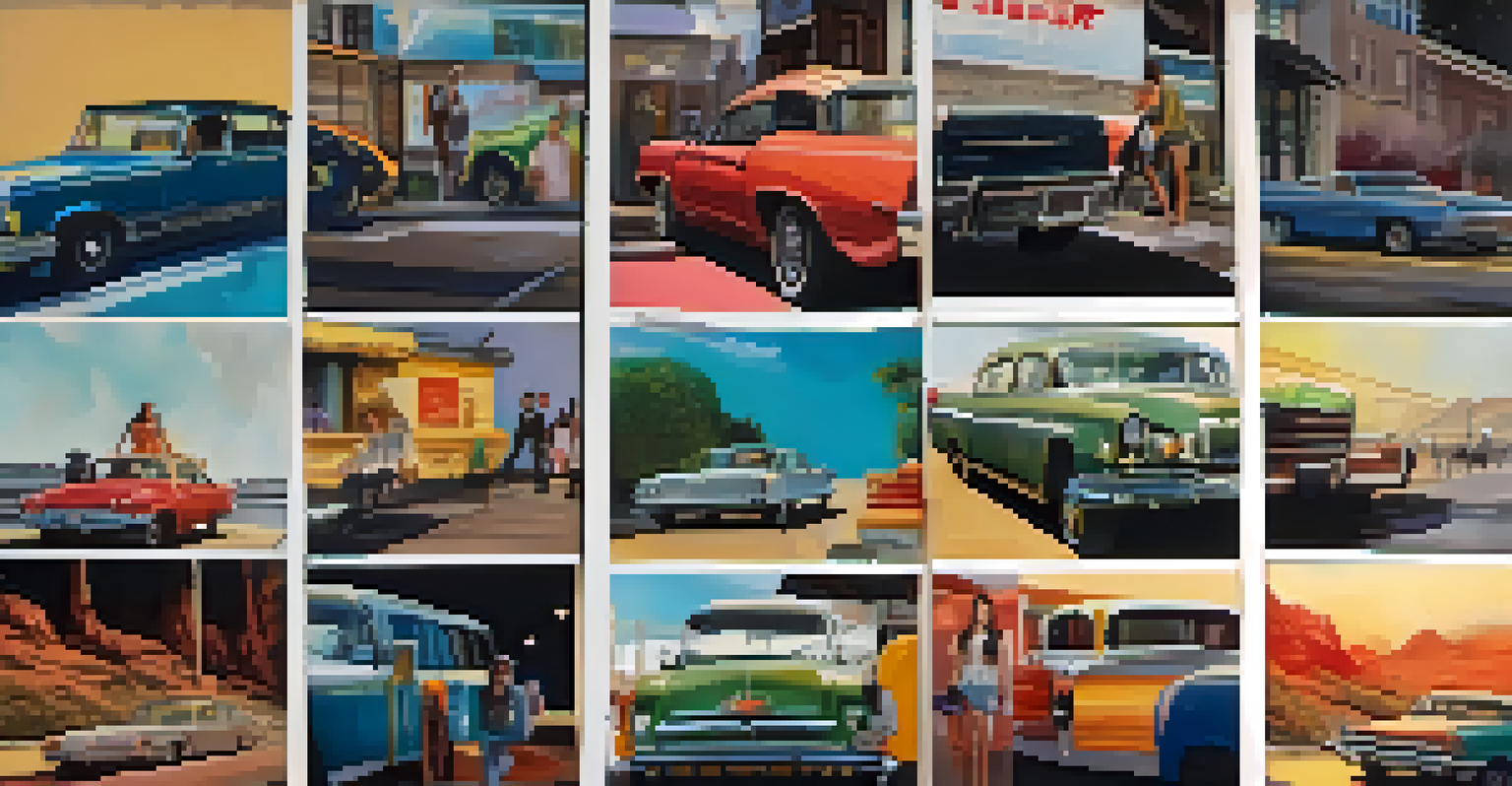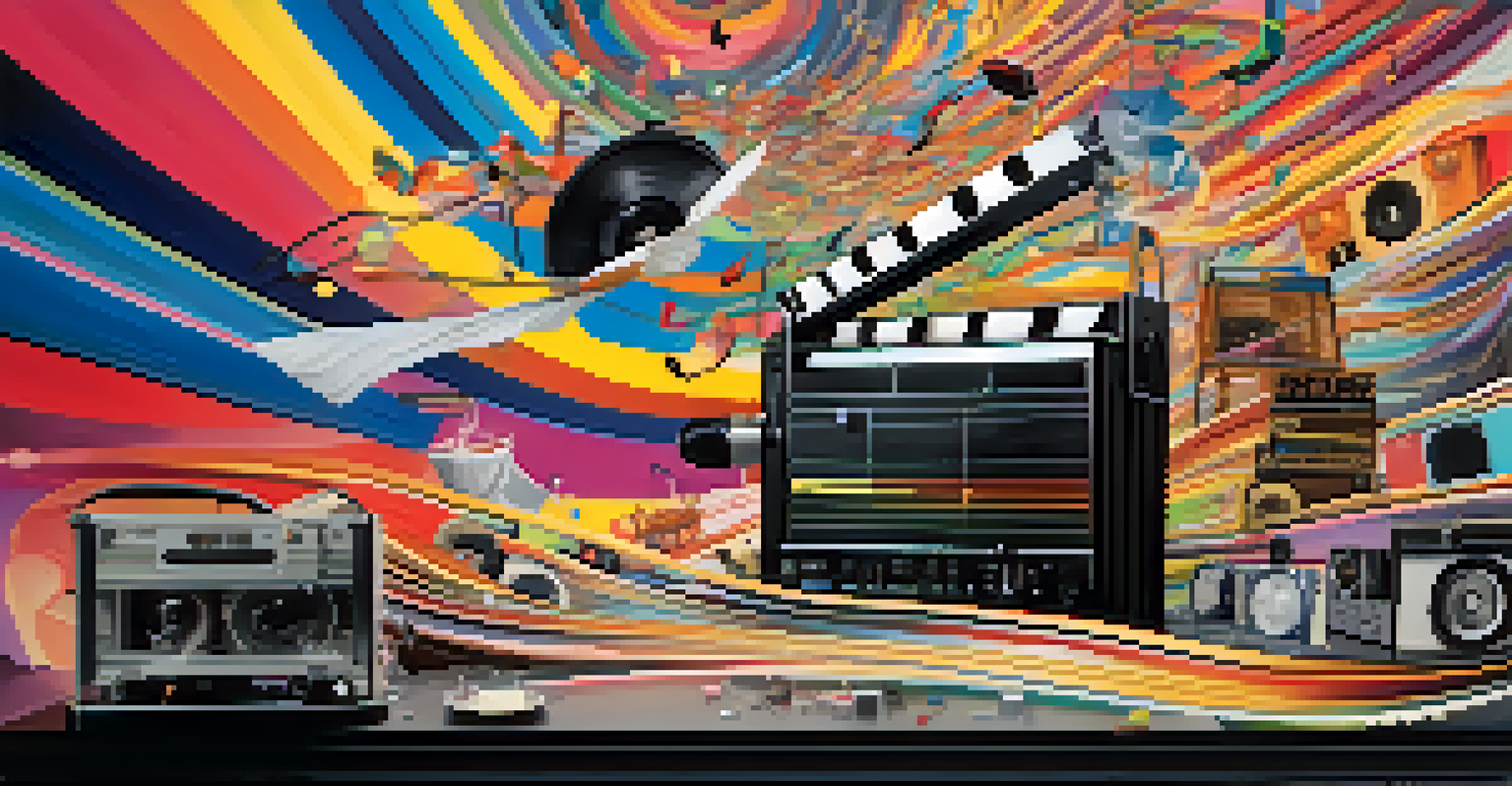The Psychology Behind Trailer Editing: Hooking Viewers

Understanding Viewer Psychology in Trailer Design
At the core of effective trailer editing lies an understanding of viewer psychology. Trailers aim to evoke emotions and create anticipation, which is crucial for drawing in an audience. By tapping into the psychological principles of curiosity and suspense, editors can craft narratives that resonate deeply with viewers.
The best trailers are a promise of the experience to come, a mini-story that draws you in and excites your imagination.
For instance, the use of cliffhanger moments can stimulate a viewer's need for resolution, compelling them to watch the full movie. This strategy plays on the basic human instinct to seek closure, which makes trailers not just previews but psychological triggers. Understanding these principles helps editors decide which scenes to highlight for maximum impact.
Moreover, it's essential to recognize that different audiences have varying emotional triggers. A horror film may focus on fear-inducing moments, while a romantic comedy might highlight heartwarming interactions. Tailoring the trailer to the intended audience enhances engagement and ensures the film reaches its target demographic.
The Role of Music and Sound in Trailers
Music and sound design are pivotal in shaping the emotional landscape of a trailer. A well-chosen soundtrack can elevate the visuals, creating an immersive experience that resonates with viewers. For example, a suspenseful score can heighten tension, while an upbeat tune may evoke joy, guiding the audience's emotional response.

Sound effects also play a crucial role in trailer editing. The sharp clang of an action scene or the soft whisper of a romantic moment can enhance the storytelling, making it more relatable. This auditory stimulation works in tandem with visuals to create a holistic experience that lingers in the viewer's mind.
Viewer Psychology Drives Engagement
Understanding emotions like curiosity and suspense in trailers can significantly enhance audience anticipation and interest.
Ultimately, the right combination of music and sound can turn a standard trailer into a memorable experience. It's about crafting a sonic identity that aligns with the film's themes and emotions, ensuring that audiences feel connected before they've even seen the full story.
Creating a Narrative Arc in Short Formats
Even in a short format like a trailer, storytelling remains vital. Effective trailers often follow a narrative arc, introducing characters, conflict, and a hint of resolution. This structure provides viewers with a sense of progression, making them feel invested in the story even before they watch the movie.
Music can change the world because it can change people.
For example, trailers may start with a glimpse of the protagonist's everyday life, then introduce a challenge or antagonist, followed by a montage of action or emotional moments. This brief journey ensures that audiences can grasp the essence of the film within a couple of minutes. It’s about creating a mini-story that captivates and intrigues.
This approach not only informs viewers about the film's premise but also stirs their emotions. By the end of the trailer, they should feel a pull towards the characters and their journey, prompting them to seek out the full film for a satisfying conclusion.
The Art of Pacing in Trailer Editing
Pacing is a critical element in trailer editing that can make or break the viewer's engagement. A well-paced trailer balances high-energy moments with quieter scenes to maintain interest. This rhythm controls the viewer's emotional journey, guiding them through excitement, tension, and anticipation.
Editors often use quick cuts during action sequences to create a sense of urgency and adrenaline. Conversely, slower cuts can establish character depth and emotional stakes. By varying the pacing, trailers can mirror the film's overall tempo, giving viewers a taste of what to expect in the full experience.
Music Shapes Emotional Experience
The right combination of music and sound effects can transform a trailer into a memorable experience that resonates with viewers.
Ultimately, effective pacing ensures that every second of the trailer serves a purpose. It keeps the audience hooked, encouraging them to stick around until the end in anticipation of what’s coming next.
Visual Techniques that Captivate Audiences
Visual storytelling is another fundamental aspect of trailer editing. Editors use various techniques, such as color grading and shot composition, to evoke specific feelings. For example, dark, desaturated colors might suggest a thriller, while vibrant hues are often used in comedies or family films.
Additionally, the choice of shots can significantly influence viewer perception. Close-ups can create intimacy and connection with characters, while wide shots may convey the scale of an epic adventure. By strategically selecting visuals, editors can communicate themes and moods without relying solely on dialogue.
This visual language transforms a trailer from a simple preview into an art form. Each frame is carefully considered to ensure it resonates with the target audience, effectively communicating the essence of the film.
The Impact of Branding and Recognition
Branding plays a powerful role in trailer editing, especially for established franchises. Viewers often have preconceived notions based on previous films, which editors can leverage to enhance engagement. By incorporating familiar elements, trailers can evoke nostalgia and excitement, drawing in both loyal fans and new audiences.
For instance, a trailer for a sequel might highlight iconic visuals or themes from the original movie. This builds anticipation and reassures viewers that they will be getting the experience they love while also introducing new elements. The balance between familiarity and innovation is key to capturing interest.
Social Media Amplifies Trailer Reach
Utilizing social media platforms allows trailers to achieve greater visibility and engage targeted audiences effectively.
Effective branding not only boosts immediate recognition but also fosters a deeper connection with the audience. When viewers feel a sense of belonging to a franchise, they are more likely to engage with new installments and remain loyal fans.
The Role of Social Media in Trailer Success
In today's digital age, social media has revolutionized how trailers reach audiences. Platforms like YouTube, Instagram, and TikTok allow for widespread sharing, increasing visibility and engagement. Trailers can go viral, generating buzz and excitement that traditional methods simply can't match.
Moreover, social media enables trailers to target specific demographics with ease. By analyzing viewer behavior and preferences, marketers can tailor their promotional strategies to ensure they reach the right audiences. This personalized approach enhances the effectiveness of trailer distribution, maximizing impact.

Ultimately, social media serves as a powerful tool for amplifying trailer success. It not only broadens reach but also fosters community discussions, allowing viewers to share their excitement and anticipation, creating a sense of collective engagement around upcoming films.